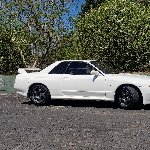R32 Gtr Single Gt35r. Apexi's De-jetro A Good Choice?
Announcements
-
Similar Content
-
Latest Posts
-
Put a hand on an injector and see if that's what the buzzing is. You might be triggering the injectors by moving off idle command.
-
By PotatoCake · Posted
Ah, should have been clearer. Currently has a flex sensor installed all good to go. like u mentioned, I’ve only ever known the car on e85, I might hate 98, but I have to try it out first. Everyone says the -5 turbos get pretty laggy on 98 octane tho… -
Duncan , the plan is to get the down pipes done then I book it in for the full tune . Most likely late May , that's the plan.
-
By Murray_Calavera · Posted
The suspense is killing me lol. Are you going to buy a flex sensor, then add the 98 tune to your current tune? It sounds like your just going to delete the current tune and re-tune the car on 98 =/ If you've only known your car on e85, I don't think it will be long before you install the flex sensor and go back to running e85 when its available lol. -
By PotatoCake · Posted
Currently on an e85 only tune, but I barely get 200km from a full tank. Makes going for longer drives difficult, especially when u leave Melbourne metro as there aren’t many united servos, hence why I’m thinking of going more of a 98 setup. And yes the smell lol. Any drive afterwards I need to have a shower and wash all the clothes I was wearing, it’s like someone made a Calvin clown e85 perfume and sprayed it all over me haha
-







Recommended Posts
Create an account or sign in to comment
You need to be a member in order to leave a comment
Create an account
Sign up for a new account in our community. It's easy!
Register a new accountSign in
Already have an account? Sign in here.
Sign In Now